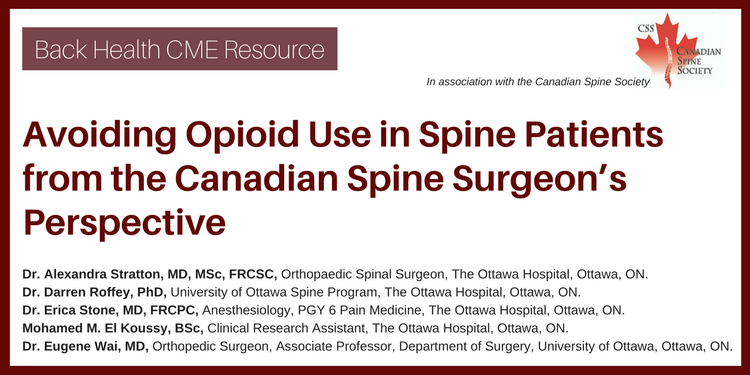1Orthopaedic Spinal Surgeon, University of Ottawa Combined Adult Spinal Surgery Program, Division of Orthopaedic Surgery, The Ottawa Hospital, Ottawa, ON.
2University of Ottawa Spine Program, The Ottawa Hospital, Ottawa, ON, Clinical Epidemiology Program, Ottawa Hospital Research Institute, Ottawa, ON.
3Anesthesiology, PGY 6 Pain Medicine, The Ottawa Hospital, Ottawa, ON.
4Clinical Research Assistant, University of Ottawa Combined Adult Spinal Surgery Program, Division of Orthopaedic Surgery, The Ottawa Hospital, Ottawa, ON.
5is an orthopedic surgeon who specializes in the care of adult spinal disorders. He is also an Associate Professor in the Department of Surgery at the University of Ottawa. In addition he is the Research Chair for the Canadian Spine Society. Department of Orthopaedic Surgery, Centre Hospitalier Universitaire de Québec, Laval University, QC.

